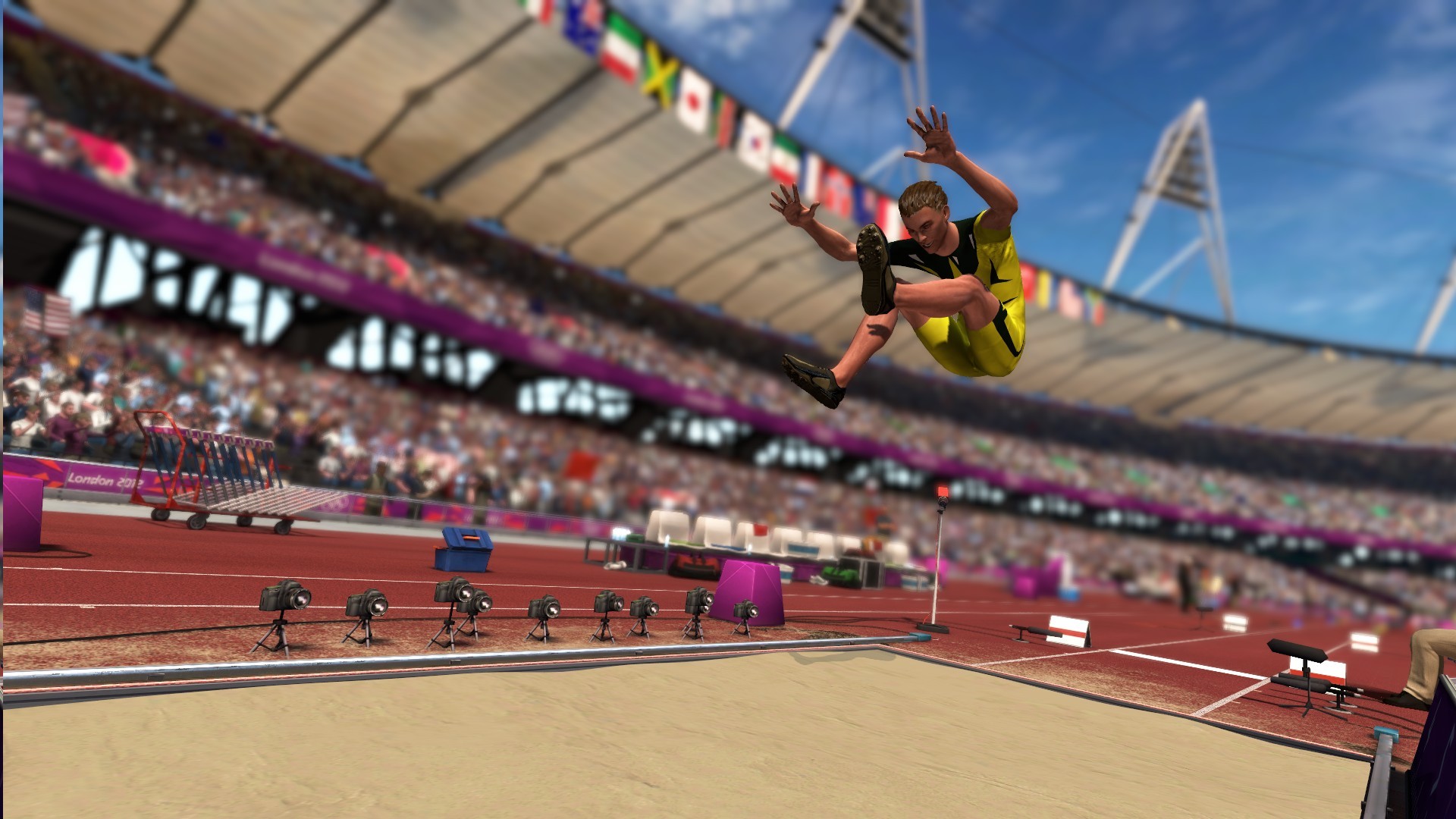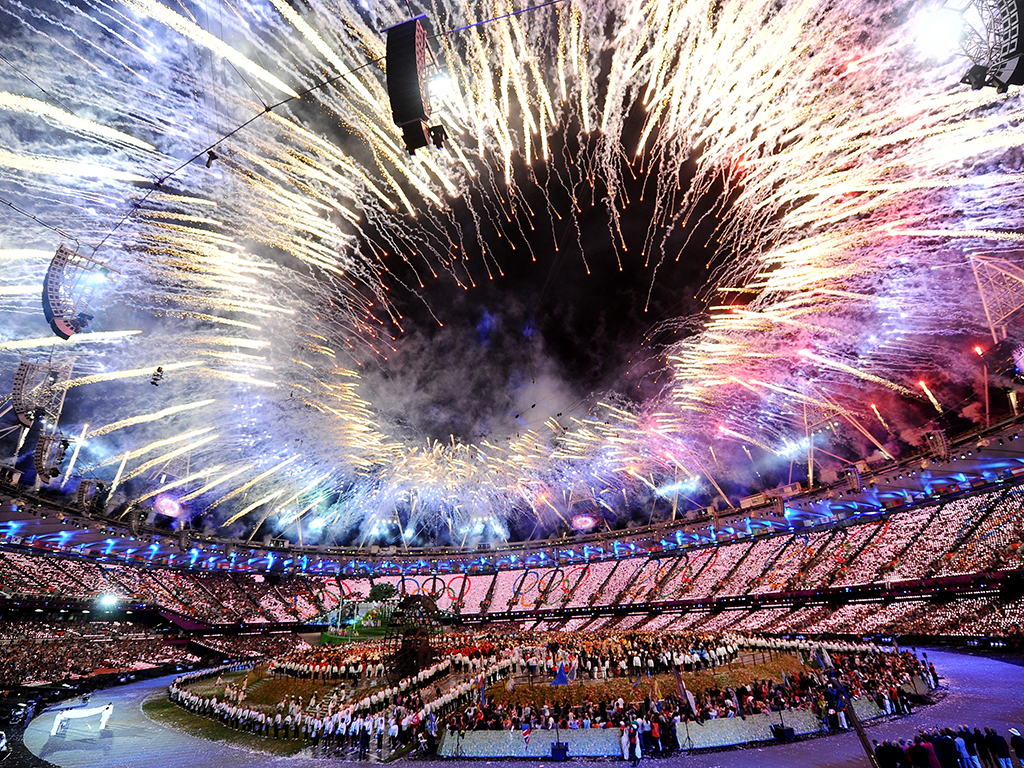- London 2012 Olympics Games Download
- Olympic Games London 2012
- Olympic Games London Opening Ceremony
- Olympic Games London 2012
- Olympic Games London Opening
LONDON - The Tokyo Olympics look 'unlikely' to go ahead as the coronavirus pandemic continues to paralyze large parts of the world, a senior official from the London 2012 Games has said. Keith Mills, who was deputy chairman of the London 2012 organizing committee, said Tokyo officials should be making plans to cancel. The ancient Olympic Games included several of the sports that are now part of the Summer Games program, which at times has included events in as many as 32 different sports. In 1924 the Winter Games were sanctioned for winter sports. The Olympic Games have come to be regarded as the world's foremost sports competition. For the third time in history, London will host the Olympic Games in 2012 four years after Beijing wowed the world. Events for the London 2012 Summer Games will take place in the Olympic Park in Stratford, East London; in the River Zone around Greenwich; and in various venues dotted around Central London and its outskirts.
The Olympic Games are no stranger to controversy and tragedy–and the London Olympics logo is a little bit of both. Since it was first revealed two years ago, the logo has been met with criticism for its radical design and even religious uproar when the word 'zion' was thought to be hidden in the text.
The 2012 Olympics logo may be divisive, but there's still a great deal to learn from it about the pratfalls of biting off more than you can chew when it comes to edgy design concepts.
What's Wrong With the 2012 London Olympics Logo?
For every Olympic Games, there has been an accompanying logo that serves as a brand identity for that particular year while allowing the host country to show off under a global spotlight. A good Olympics logo should give a sense of the games themselves, while being a reflection of the time period that the games were hosted in. Most importantly, the logo should be a reflection of the host country's culture and values.
The London Olympics logo fails in almost all of these categories. While the bright pink and yellow colors bring a sense of energy and excitement associated with the Summer Olympics, it could just as easily be an invitation to a beach party. There's nothing in the design that specifically feels like the Olympics, other than the actual Olympic logo at the top. The design is meant to imply the year '2012,' but the elements that spell it out are so bizarrely placed and shaped that that's not readily apparent.
The bright colors and weird shapes of the 2012 Olympics logo do not accurately portray the host city of London.
One of the biggest complaints lobbed against this design is that it looks like something out of the 80's or 90's, not 2012. Granted, the 80's and 90's have made a kind of design comeback in pop culture, but in a strictly retro kind of way. London may be a hip, modern city, but this design gives no indication of British culture or even the London lifestyle. It could just as easily be a design for America or Japan.


The London logo caught flak in the media since the Olympics are so, well, popular. But many small brands make logo blunders that are just as bad—and just as noticeable to their customers. Chrome plugin video downloader. Our logo design services will make sure this doesn't happen to you. Our designers will help you create a logo that speaks to your brand's culture and history, the way these past logos did for the Olympics.
Past Olympic Logos
London 2012 Olympics Games Download
Mexico Summer Olympics 1968
The look of the Mexico 1968 logo is immediately reminiscent of the era itself. The Olympic Logo is worked directly into the design on the '68.' The curls in the design give you the sensation of the different lanes on a track, tying the design into the Summer Olympics. The curls are also reminiscent of a certain style of Mexican folk art, helping to tie the logo into the culture of its host country.
Calgary Winter Olympics 1988
Calgary 1988 Olympics Logo

The minimalist snowflake design for the Calgary 1988 games simultaneously makes you think of both a snowflake and a maple leaf, which is the symbol used on the Canadian flag. A number of different sized letter C's are hidden in the design, to represent both Canada and Calgary.
Nagano Winter Olympics 1998

.jpg/800px-Olympic_Park%2C_London%2C_16_April_2012_(2).jpg)
The London logo caught flak in the media since the Olympics are so, well, popular. But many small brands make logo blunders that are just as bad—and just as noticeable to their customers. Chrome plugin video downloader. Our logo design services will make sure this doesn't happen to you. Our designers will help you create a logo that speaks to your brand's culture and history, the way these past logos did for the Olympics.
Past Olympic Logos
London 2012 Olympics Games Download
Mexico Summer Olympics 1968
The look of the Mexico 1968 logo is immediately reminiscent of the era itself. The Olympic Logo is worked directly into the design on the '68.' The curls in the design give you the sensation of the different lanes on a track, tying the design into the Summer Olympics. The curls are also reminiscent of a certain style of Mexican folk art, helping to tie the logo into the culture of its host country.
Calgary Winter Olympics 1988
Calgary 1988 Olympics Logo
The minimalist snowflake design for the Calgary 1988 games simultaneously makes you think of both a snowflake and a maple leaf, which is the symbol used on the Canadian flag. A number of different sized letter C's are hidden in the design, to represent both Canada and Calgary.
Nagano Winter Olympics 1998
The Nagano 1998 Games had a 'snowflower' design with petals that resemble human figures in various states of activity. Not only is winter and athleticism represented, but the colorful, optimistic and kinetic design is representative of the late 90's style.
Salt Lake City Winter Olympics 2002
Salt Lake City 2002 Olympics Logo
Olympic Games London 2012
The colors of the Salt Lake City 2002 logo are representative of Utah's unique landscape and were designed to look like the sun rising over a mountain. The shape of the design has two purposes: it looks both like a snowflake and the Olympic Torch. The sans serif font and the stylized design are modern and sleek.
Turin Winter Olympics 2006
The Turin 2006 logo chose to use 'Torino' in the logo, which is the Italian word for the city of Turin. This is a bold way to establish brand identity. The design itself is styled after the Mole Antonelliana in Turin, but the blue grid pattern brings the feeling of winter together with a representation of modern technology and communication.
Olympic Games London Opening Ceremony
These logos are successful because the design represents the culture of the host country, the style of the era and the excitement of the Olympic Games. The London 2012 logo lacks in all three areas–it says nothing about Great Britain, it looks like a design from the 80's and there's nothing concrete to tie it to the athleticism or pageantry of the Olympic Games.
In the end, it might not be all bad for the London Olympics logo. The logo may not work aesthetically, but it has managed to capture our attention and will likely be remembered throughout history, albeit for the wrong reasons.
London 1908
Amid volcanic explosions, London steps in to save the day
Truth be told, London was never meant to host the Olympic Games in 1908. The huge volcanic eruption of Vesuvius in 1906 saw the Italian government pull Rome from hosting the Games amid fears of spiralling costs and, at the 11th Hour, London stepped in to save the day. The new 68,000-capacity White City Stadium, considered in the day a technological marvel, was built at a cost of £60,000 – compare that to the £537m spent on the new Olympic Stadium in Stratford! – and the organising committee held a further budget of £15,000. The hastily built stadium had a 535m track (three laps to the mile) inside which there was a swimming pool and raised platforms for wrestling and gymnastics.
Olympic Games London 2012
The 1908 Games started in spring and ran all summer, from 27 April to 31 October, with 22 nations contesting 22 sports, including events long gone from today's Olympic programme – such as Polo, the Standing Long Jump and Tug-of-War. One similar venue to the London 2012 Games was used, with the All England Club in Wimbledon hosting the Tennis (or Racquets) competition. The spirit of the Games was evident in the Tug-of-War final, which saw a team of Liverpudlian policemen beat the Americans, while there was controversy in the 400m after a lane dispute saw three US runners boycotting a re-run of the four-man final, allowing Briton Wyndham Halswelle to win the only ever Olympic walkover in history. Halswelle that ends well, as they say.
One history-changing moment occurred during the London 1908 Games involving the Marathon event, which until 1908 had habitually been a race of 25 miles – the exact distance between Athens and Marathon in Ancient Greece. There was a slight snag, however, for the London 1908 Games: the race was to start at Windsor Castle and end at the White City Arena, a length of 26 miles; what's more, King Edward VII and Queen Alexandra – who had set the route in the first place – stipulated that the race was to finish under the Royal Box at the stadium, adding on a further 385 yards. As a result, the modern-day Marathon distance of 26 miles, 385 yards was born – although it was not to the liking of all competitors. Italian confectioner Dorando Pietri was leading the race as it entered the stadium, but he collapsed five times on the closing lap in the uncharacteristically hot British summer sun. It took him 10 minutes to complete the final 350 metres, and he only completed the race after bring practically dragged over the line by race officials. Pietri was disqualified after the American team of the runner-up lodged a complaint – although he did pick up a silver cup as consolation prize awarded by the Queen one day later.
Olympic Games London Opening
Incidentally, the host nation won 99 more medals than their nearest opponent in the overall medal table, the USA. Great Britain's tally of 146 medals included 56 golds.

